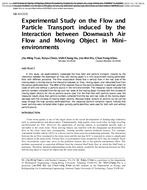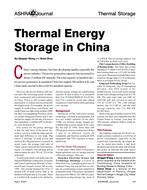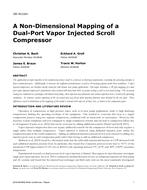In this research we examine the uncertainty associated with the design weather conditions (DWC) as found in the ASHRAE Handbook—Fundamentals. The work is organized around three main objectives. The first objective is to determine the error associated with typical data limitations, such as nonhomogeneous data, incomplete data, and insufficient data. The second objective is to develop methods to estimate the percentiles of hourly dry-bulb temperature from daily data and to estimate humidity-related design weather conditions when no humidity data are available. The final objective is to determine the frequency and duration of episodes during which the ASHRAE DWC are met or exceeded. We find for dry-bulbrelated DWC that various data limitations are generally minimal (uncertainty less than 1°C) for a station if at least ten years of data are available. For DWC involving psychrometric variables, the probable error was shown to vary with measuring system and ambient conditions. Methods developed for estimating hourly DWC from daily values proved reliable (mean absolute error less than 1°C). The estimation of wet-bulb DWC when only dry-bulb temperatures are available is challenging, but a useful method was developed (mean absolute error near 1°C). Episodic behavior of the frequency/duration of DWC was examined and in some sites is consistent with known trends in urban warming. There was no evidence of episodic behavior of DWC except for areas undergoing rapid urbanization.
Citation: ASHRAE Trans. vol. 111, pt. 2, paper no. 4815, p. 317-326
Product Details
- Published:
- 2005
- File Size:
- 1 file , 650 KB
- Product Code(s):
- D-27020


